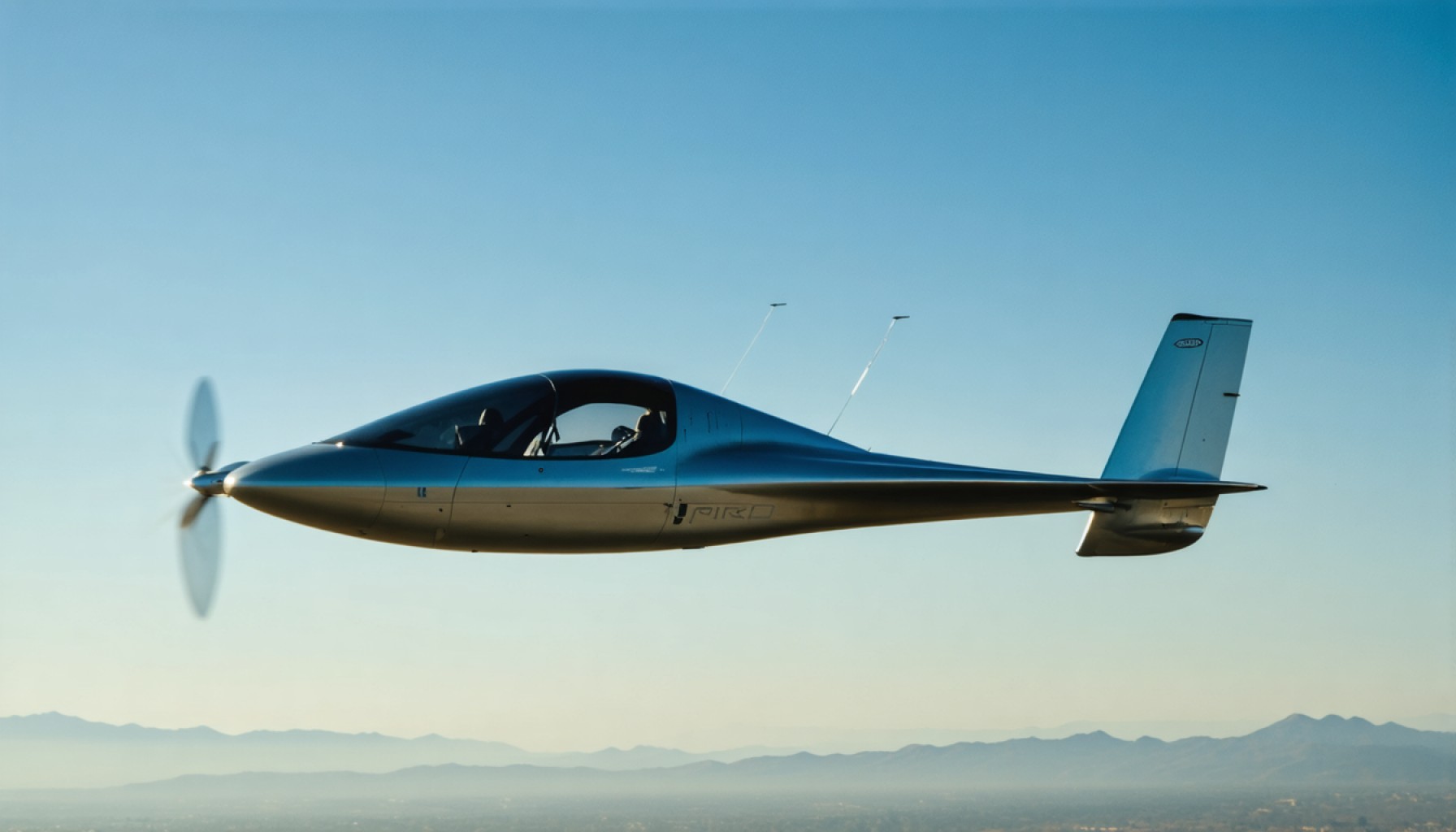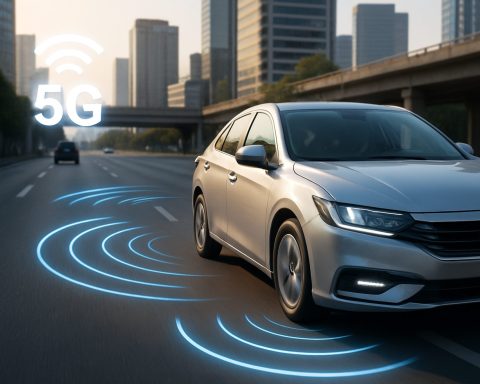- Alef Aeronautics’ Model Zero has achieved a historic milestone, becoming a pioneering flying car in California.
- The Model Zero is an entirely electric vehicle with a 320-kilometer driving range and a 160-kilometer flight capacity.
- This innovation aims to alleviate urban congestion by offering seamless transitions from road to air travel.
- Alef’s goal is to make flying cars accessible to the general public, not just the wealthy.
- Over 3,300 pre-orders have been placed for the Model A, expected to begin production this year at $300,000.
- The company plans a more affordable Model Z, targeting a price of $35,000.
- The flying cars are designed to fit in standard parking spaces and meet current regulatory standards.
- Alef’s vision suggests a transformative future for urban mobility with flying cars as a routine presence.
A vision from the pages of science fiction has leaped into reality above the sunlit streets of California. Alef Aeronautics’ pioneering Model Zero has marked a milestone, gliding into the air and soaring over a stationary vehicle. This scene, reminiscent of the early days of aviation, evokes the groundbreaking spirit of the Wright Brothers’ inaugural flight. Yet, unlike the rickety craft of 1903, the Model Zero camouflages itself as an ordinary car, hiding sophisticated rotors within its sleek, modern frame.
As the dawn of a new era in transportation emerges, the hushed whir of rotors signals a departure from traditional tarmac-bound vehicles. Entirely electric, the Model Zero promises a journey not constrained by traffic jams or sprawling urban landscapes. It boasts a commendable driving range of 320 kilometers, which transitions seamlessly into aerial travel with a 160-kilometer flight capacity. This duality in motion presents a tantalizing solution to the age-old problem of urban congestion.
At the heart of this initiative is Alef’s ambition to democratize the skies. By producing a flying car that merges practicality with innovation, the company asserts that airborne mobility should not be the preserve of the affluent. Over 3,300 visionaries have already secured pre-orders for Alef’s anticipated commercial product, the Model A, with production slated to commence this year. Though valued at $300,000, Alef is already working on the more economical Model Z, projected to retail at $35,000.
Alef’s creative approach fuses the familiar with the extraordinary, crafting a vehicle that parks comfortably in standard spaces and rises compliant with existing regulations. In a scene that could soon become routine, these vehicles may hover above morning gridlocks, their presence blurring the lines between dream and reality.
The journey from crowded highways to open skies reflects a transformative leap not just in technology but in societal norms. Alef Aeronautics envisions a world where the hum of an engine takes us towards vast horizons, not just to the next traffic light. As we stand at the cusp of airborne automobiles, our cities—and indeed, our lives—might soon echo with the possibilities these flying cars bring.
Revolutionizing Urban Transport: How Flying Cars Are Changing Our Future
Introduction
The concept of flying cars has long been the subject of science fiction, but thanks to advances in technology, it is now becoming a tangible reality. Alef Aeronautics is spearheading this revolution with their innovative Model Zero and the upcoming Model A. This groundbreaking advancement is more than just a novelty; it could redefine how we think about transportation, urban planning, and environmental impact.
Features, Specs, & Pricing
Model Zero and Model A Specs:
– Design: The Model Zero disguises itself as a typical vehicle, integrating sophisticated hidden rotors. This allows it to transform seamlessly from driving to flying.
– Range: It offers a 320-kilometer driving range and a 160-kilometer flight capacity, running entirely on electric power.
– Price: The Model Zero is a prototype, but its commercial successor, the Model A, is priced at $300,000. Alef is also planning a more affordable model, the Model Z, aimed to be priced at $35,000.
Market Forecasts & Industry Trends
Analysts predict that the flying car market could grow exponentially over the next decade. According to data from Morgan Stanley, the urban air mobility market could be worth $1.5 trillion by 2040. The emergence of electric flying vehicles reflects broader trends in sustainable urban transport, aiming to alleviate congestion while reducing carbon footprints.
Pros & Cons Overview
Pros:
– Reduced Urban Congestion: By taking transportation to the skies, flying cars can decrease the burden on road infrastructure, helping to alleviate urban traffic jams.
– Environmental Benefits: Fully electric, flying cars like the Model Zero can contribute to reducing urban carbon emissions significantly.
– Time Efficiency: Aerial travel can drastically cut down commute times compared to traditional road travel.
Cons:
– Cost Barrier: Despite promises of an affordable model, current prices are still a significant barrier for average consumers.
– Regulatory Challenges: Integrating flying cars into existing airspace and urban landscapes necessitates comprehensive regulatory frameworks to ensure safety and compliance.
– Infrastructure Requirements: Additional infrastructure, such as vertical takeoff and landing pads, needs development in concert with these vehicles.
Security & Sustainability
Alef focuses on both security and sustainability within its flying car models. The electric propulsion system ensures a lower environmental impact compared to traditional fuel vehicles. Additionally, security measures must align with aviation industry standards, requiring rigorous testing and compliance with aviation regulations.
Real-World Use Cases
Emergency Services: Flying cars could revolutionize emergency response, offering quicker routes for ambulances and allowing law enforcement to navigate traffic-choked urban landscapes more efficiently.
Remote Accessibility: In areas prone to inaccessible terrain or lacking traditional infrastructure, flying cars could provide essential transport and delivery services.
Insights & Predictions
In the coming years, we may witness urban landscapes adapt to accommodate the rise of airborne vehicles. Cities will likely evolve with “vertiports” as destinations for flying cars, integrating these platforms into the fabric of urban life.
Actionable Recommendations
1. Stay Informed: Monitor developments in legislation and infrastructure that support flying cars to understand how they might impact your city.
2. Consider Pre-orders: If you’re a forward-thinking transport enthusiast, pre-orders might be an option to stay ahead in the market.
3. Advocate for Policies: Support local policies that foster innovation in sustainable transportation, facilitating infrastructure development that accommodates this technology.
Conclusion
The leap from fiction to reality in flying cars is not only an exciting technological advancement but also a promising solution to some of the most pressing urban transport challenges. As companies like Alef Aeronautics continue to push boundaries, it’s crucial for society to prepare for this airborne transformation. Transitioning into the skies could indeed change the rhythm of our cities and day-to-day life.
For more on cutting-edge innovations and futuristic transportation, visit Alef Aeronautics.












